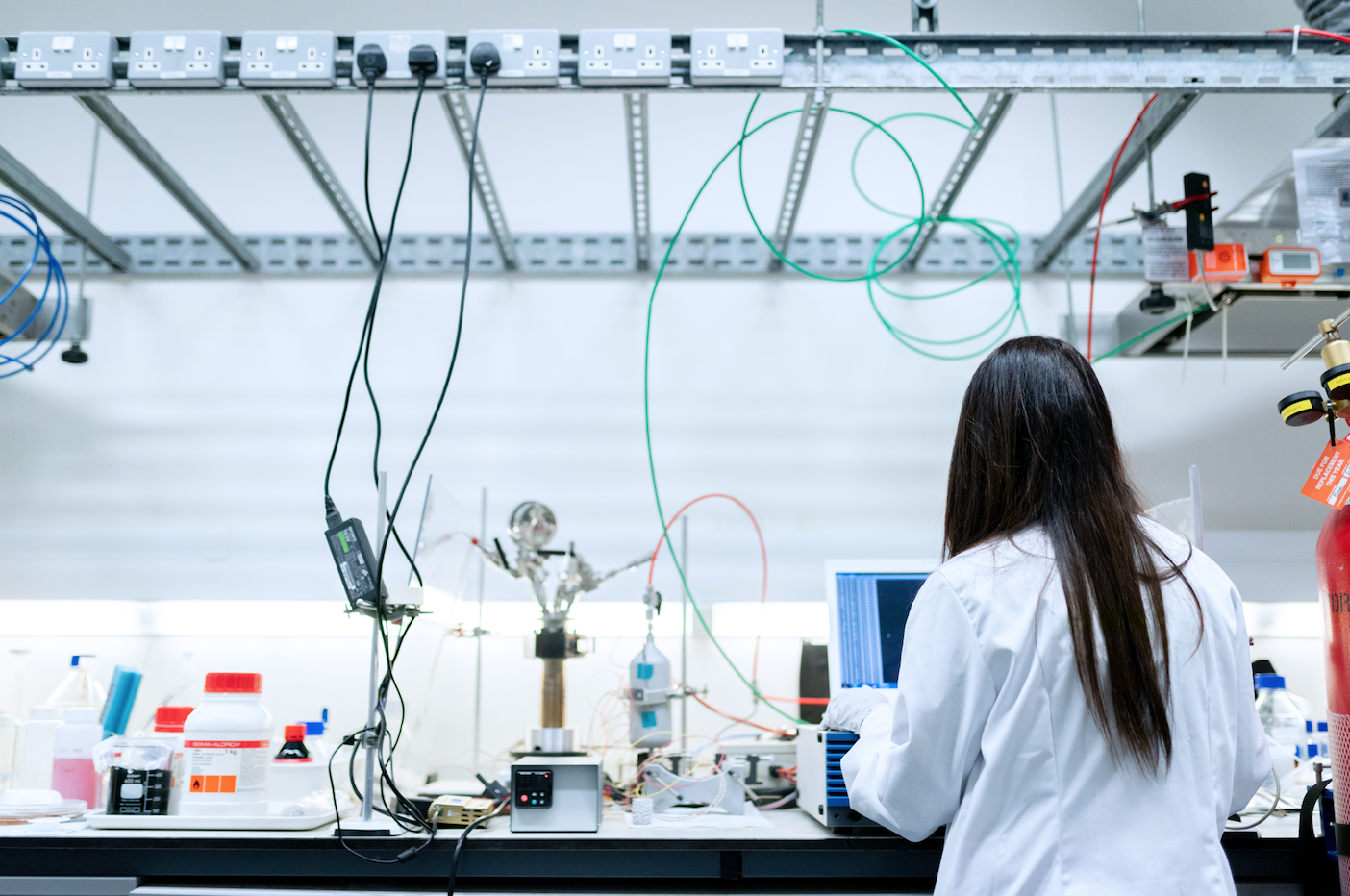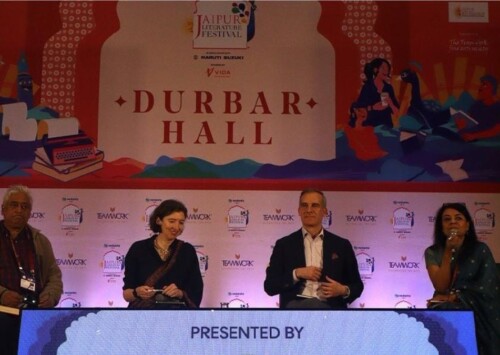Growing gender gap in STEM jobs in India
Uneven playing field forces women to leave workforce

Despite producing such a large percentage of STEM graduates, the share of women actually employed in the scientific research and development sector in India is a mere 14 pc (Photo: Unsplash/thisisengineering)
Global gender equality in the STEM (Science, Technology, Engineering and Mathematics) workforce has certainly come a long way since the 1800s, when universities first began accepting women into academic programmes. Yet, in India, numbers seem to be creeping along at a snail’s pace, and this inequality is perpetuated by persistent gender stereotypes, male-dominated cultures and a lack of conversation that takes women’s voices into account.

Despite producing such a large percentage of STEM graduates, the share of women actually employed in the scientific research and development sector in India is a mere 14 pc (Photo: Unsplash/thisisengineering)
With the digital revolution rapidly gaining ground in India, driven by enormous investments in technology and a huge market of digitally-connected users, currently at 560 million consumers, the country is well on its way to possibly becoming one of the world leaders in science and technology.
Despite being a highly conservative and patriarchal society, India has made big strides in educating its female population over the decades. Currently about 43 pc of STEM graduates in the country are women, which is the highest in the world. Yet, unfortunately, these numbers do not reveal the entire truth about the place of women in the workforce as India ranked 108 out 149 countries per the Global Gender Gap Report, 2018. Despite producing such a large percentage of STEM graduates, the share of women actually employed in the scientific research and development sector in India is a mere 14 pc, far behind the US, for example, where women make up 50 pc of the overall STEM workforce. Moreover, alarmingly the number has dropped by more than half from 29 pc in 2015-2016, showing that India is rapidly going backwards when it comes to gender parity at workplace.
Lack of conversation worsens gender gap
Experts say that it is a waste of talent when trained female scientists give up their careers and drop out of the workforce. Simantini Ghosh, a professor in the Department of Psychology at Ashoka University in Sonepat near Delhi, puts this down to lack of concern among the scientific community in India.
“This gender bias in academia is very prevalent in India, but unfortunately there is very little solid data or research to back it up. And in some cases, people don’t even want to engage in this at all, although it’s so plain out there for everyone to see,” Ghosh tells Media India Group.
She explains the firmly entrenched patriarchal culture of Indian society, which simply refuses to take a woman’s situation into account, makes the road to the top much more difficult for female scientists. The Department of Science and Technology (DST) found that women were either not being promoted, or dropping out mid-career in order to take care of their families. And this is especially true in science, where many research labs are male-dominated.
“During my post doc, I definitely felt there was an element of bias in the way my credibility or my work was evaluated in the lab. Especially since I had a small child at that time, taking out time needed, maintaining the lab hours the Principal Investigator (PI) expected was a big issue. For women, even if they have a demanding career, they are still expected to do the bulk of housework, childcare and any elder care for that matter. So the ways we assess productivity in academia, in terms of how many papers published, grants received – these are not equal between men and women,” she says.
Going up the ladder in academia is largely dependent on promotions and receiving tenure, but many female scientists like Ghosh argue that statistics showing women academics with a “lower productivity,” especially if they have young children, are misleading because the standards of assessment only cater to men. This in turn results in a persistent Catch-22 situation where women are blocked from progressing in their careers, which can lead to a lack of interest in pursuing it for future generations.
“And that difference is driven by the burden of the disproportionate amount of care at home placed on women. And not that this is very present at the policy level in other countries, but at least in my personal perception from when I trained there, the universities in the US are a little more accommodating in this regard, especially with departments that are women-heavy. In India, especially because there are so few women in leadership positions, this is not even a consideration, when people make decisions regarding tenure, regarding promotion, so all of this factors in the way gender bias and stereotyping works in academia. There has been a lot of research by women that ask, until what extent is this model of evaluation even applicable to women in science? You have to account for these differences,” says Ghosh.
New policies signify hope
Societies can no longer ignore the importance of equal rights in the workplace, not only because it is a human rights issue, but also as it can significantly affect a country’s economy. A report by McKinsey Global Institute in 2018 estimated that India’s GDP could increase by USD 770 billion by 2025 if more women were added to the workforce, but currently, women overall contribute only 18 pc of the country’s GDP.
“In the US, for an institute to even be able to get an NIH grant or training grant, the university needs to show that it has women in senior or leadership positions. So at the policy level, there is this acknowledgement at least, but in India, there’s nothing,” says Ghosh.
Last year, the Department of Science and Technology revealed that its draft of the new Science, Technology and Innovation Policy (STIP 2020) would place a large focus on increasing the participation of women in science, by introducing a system of grading institutes based on the number of women faculty and scientists in higher positions.
This move has been inspired by the UK’s Athena SWAN (Scientific Women’s Academic Network) programme, now cropping up in many countries, which awards participating research organisations and academic institutions bronze, silver or gold accreditation when they take action on improving gender equity efforts. Some targets of such programmes include confronting the gender pay gap, addressing discriminatory treatment and sexual harassment, and having a balance of men and women in decision-making roles; per STIP, all scientific selection and evaluation committees must include at least 30 pc women.
“I think it is definitely a good step to introduce policy-level changes to address this issue, but sometimes while the policy looks great on paper, often the implementation falls short. You cannot suddenly introduce these things without training people in the field and changing the social belief system,” says Ghosh.
She explains that the stereotypical mindset associated with females in science and technology is so prevalent because gender socialisation, the way children learn about the social expectations, attitudes and behaviours sterotypically associated with boys and girls, starts at a very young age. Even teachers and students’ families often underestimate girls’ abilities in mathematics, for example, which in turn discourages them from pursuing those career paths.
“These attitudes towards whether girls are good at math and science have always been blown out of proportion and makes them think they cannot do well in STEM fields. Then they play into the expectation that they will be discriminated against even if they do go into it. Moreover, they have very few female role models in the field, so the situation is really much more complex, and to address it and really make this gender neutral, we have to monitor what kind of gender socialisation we are implementing in kids since school and we need to equate that,” she adds.
With odds often stacked against girls from the very beginning, policies such as National Education Policy 2020, which is finally replacing the 1986 framing of the NEP, could be crucial in helping to close the gap, through innovative programmes such as introducing coding in schools from grade 6 onwards.
Thus, as India takes its first steps towards gender parity in science and technology, it is crucial that both the government and private institutions take the necessary steps towards gender equality, to ensure that women are not unfairly left behind.
“The framework and the way we look at success in science has to change if women are to be put on equal standing, otherwise it is not sustainable. Labour surveys have shown the benefits of investing in bringing women into the workforce, because you will be creating more opportunities for the economy to flourish,” says Ghosh.









